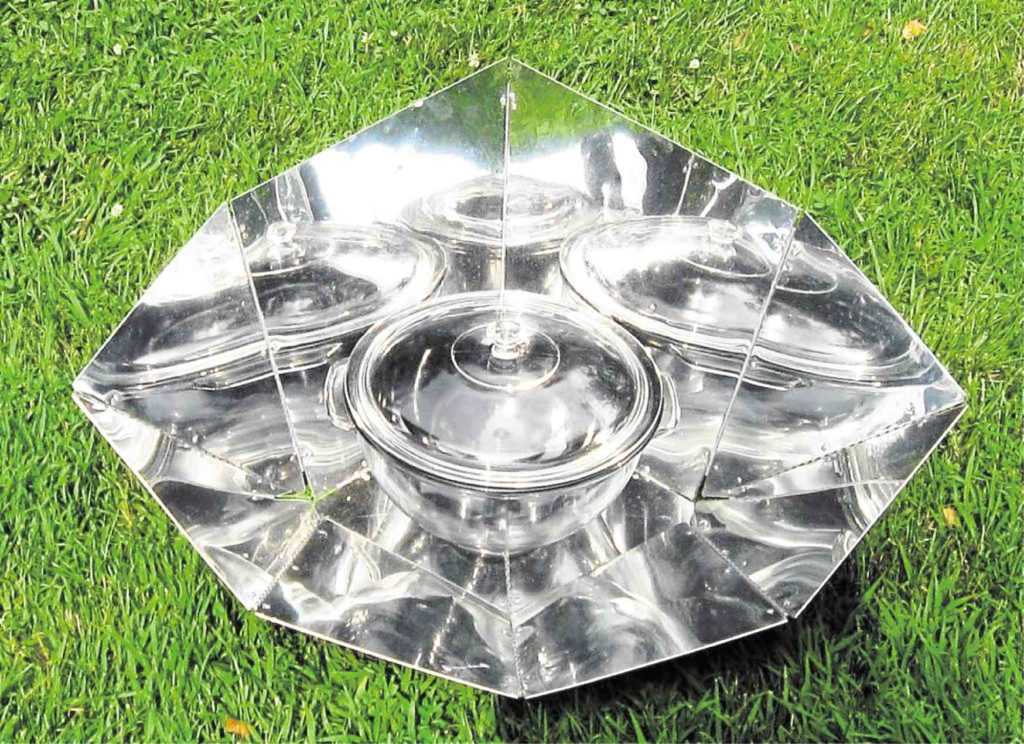Who needs shelter from the sun? Not me, no, not anyone.”
When American singer Jason Mraz penned these lyrics, he probably wasn’t thinking of the scorching summer sun in the Philippines.
During the daytime, even when the sun is just beginning to rise, it’s normal to see Filipinos whipping out their umbrellas and hurrying to escape the outdoors. Even with the presence of air-conditioners and electric fans, one cannot deny that summers in the Philippines bring intense heat.
Rather than trying to escape the sun, however, it might be worthwhile to consider the good that this intense heat can bring.
Besides giving us our daily dose of Vitamin D and helping us dry wet clothes, the sun offers a lot of potential in terms of energy. If we learn the different ways the sun’s rays can actually be used in our homes, we might be able to use the summer scorch to our advantage.
Solar cookers
Remember the camping lesson involving shining a magnifying glass on dry tinder? As long as the sun’s rays were hot enough, this simple act could be used to start and keep a fire going.
Solar cookers and ovens work based on the same principle. Reflective material is used to focus the sun’s rays to a single area that accommodates a pan or a kettle.
Through this concentrated heat, solar cookers can boil water and cook full meals. Simple and relatively inexpensive, these innovative stoves are often used in some of the hottest countries in the world.
Solar cookers are great because they cook without using fuels, charcoal, wood or electricity. They need consistent exposure to the sun though, so a cloudy weather might affect results.
Depending on the weather, cooking with solar ovens may require several hours of meal preparation. A good model, however, can easily cook meals with minimal supervision.
These stoves are available commercially abroad right now but it is possible to build your own with enough research and the right materials. At best, pioneers still recommend keeping a back-up oven in case of any unforeseen weather.
Water heaters
Like solar-generated electricity, water heaters powered by the sun require a bit of an investment. Purchase and installation of the system can cost as much as P40,000 for a large household, but the savings are incurred in the long run.
Even if the initial cost is greater than its electric counterpart, the solar water heater technically produces free hot water. It also helps reduce electricity bills. In short, the system gives a bang for your buck over time.
In the Philippines, the system is sold readily by various companies. Some of these businesses provide assistance in retrofitting existing electric heaters with solar-powered ones. The equipment entails minimum maintenance but like other solar-powered items, it works best during sunny days.
If you wish to incorporate solar water heaters in your home, it would be wise to get a quotation first and determine your hot water requirements prior to making a purchase.
Solar lighting
Solar light systems can be seen in street lamps nowadays. Fueled by photovoltaics, these systems feature batteries that gather energy during the day and power the lights at night.
Coupled with LED fixtures, solar light systems are energy efficient because they can keep light turned on throughout several nights. Upon the hint of natural sunlight, the system automatically switches to battery charging.
At home, solar-powered lamps are used mostly in exterior applications. This system is quite efficient with bollards, pool lights, security lights, path lights and other outdoor lamps.
The great thing about solar-powered exterior lamps is that it does not require wiring and is still reliable even in wet areas. For a home that values reliable night lighting and inexpensive maintenance costs, this is worth looking into.
Cooling a home
Ironically, the sun can actually help fight against heat. With portable solar power kits, sunlight can be harnessed to power fans, charge phones and run other small items at home.
While this system is similar to the wide photovoltaic panels that occupy roofs, solar power kits are more affordable and user-friendly. In the Philippines, these kits are available in electronics chains and hardware shops. For homeowners wishing to try out solar power systems, these kits would provide a great introduction.
Overall, solar power is an alternative energy source that is actually abundant in our country. It is readily available and can reach even the most remote places in the Philippines.
Contrary to popular belief, not all solar powered systems are expensive. Those that do require large investments pay off eventually in the long run.
While there are limitations to the power that this system can provide, there is no doubt that using the heat of the sun as a source of power brings about numerous benefits. So instead of complaining of the heat nowadays, why not try to make the most out of it by trying out solar-powered systems?
Sources:
Julian Jagtenberg via pexels.com
Lukas Rychvalsky via pexels.com
Parveson via Wikimedia Commons
Stefan2 via Wikimedia Commons
“Who Needs Shelter” by Jason Mraz (2002)
www.solarcooker-at-cantinawest.com
www.solarthermotank.com
www.popularmechanics.com



